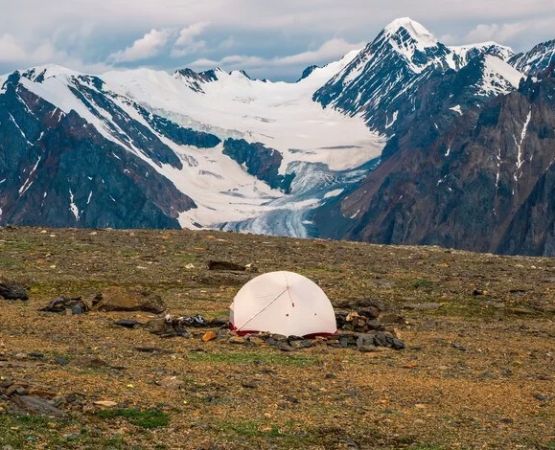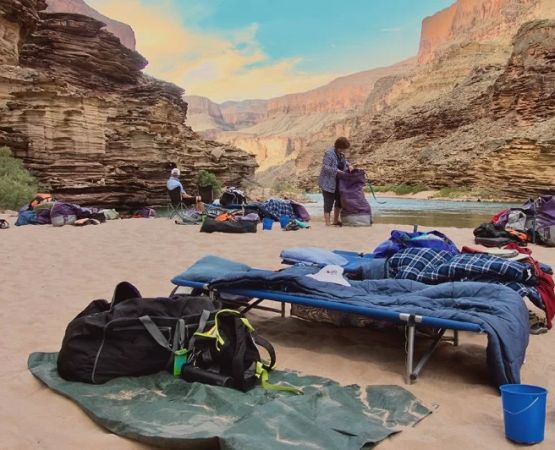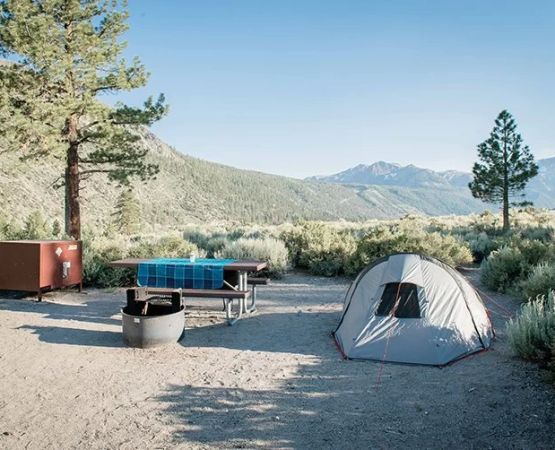How to Stay Safe During Thunderstorms While Camping
Camping in the great outdoors can be one of the most enjoyable and rewarding experiences. However, when nature decides to show its wild side, thunderstorms can quickly turn a peaceful camping trip into a dangerous situation. As someone who’s spent countless nights camping in various conditions, I’ve learned the hard way how important it is to stay safe during thunderstorms. Here, I’ll share everything I’ve learned about how to prepare for and stay safe during thunderstorms while camping.
1. Understanding Thunderstorms and Their Dangers
Thunderstorms can develop quickly, and it’s essential to understand their potential dangers before heading out. These storms are typically accompanied by lightning, strong winds, and heavy rain, all of which can pose a significant risk to campers. Lightning is one of the most dangerous aspects, as it can strike unexpectedly and cause serious injury or even death. Strong winds can blow down trees or damage tents, while heavy rain can lead to flooding in low-lying areas.
During one of my earlier camping trips, I was caught in a sudden thunderstorm. The wind picked up quickly, and the rain began to pour in torrents. I had no idea how vulnerable I was until I saw a tree fall nearby, narrowly missing our campsite. Since then, I’ve been more cautious and prepared when thunderstorms are a possibility.
2. Checking the Weather Forecast Before Camping
Before heading out for a camping trip, I always check the weather forecast thoroughly. Modern technology has made it easy to track storms, so there’s no reason to be caught off guard. Several weather apps provide real-time updates on lightning strikes, storm intensity, and wind speeds. If thunderstorms are expected, I consider postponing my trip or relocating to a safer area.
On one trip to the Smoky Mountains, we had to adjust our plans when thunderstorms were forecasted for the weekend. We relocated to a lower elevation, where the risk of lightning strikes was reduced, and the chance of being caught in high winds was much lower. It’s always better to be safe and plan ahead.
3. Choosing a Safe Campsite
Choosing the right campsite is crucial when you know a thunderstorm might be on the way. I’ve learned through experience that you want to avoid setting up camp near tall trees, especially if they have weak branches that could snap in the wind. Camping near a water source might seem like a great idea, but if heavy rain comes, you risk flooding, so I always opt for higher ground.
On one camping trip in the Adirondacks, we made the mistake of camping near a lake, thinking it would be a scenic and peaceful spot. However, during the night, a thunderstorm rolled in, and the rain caused the lake to rise, flooding our campsite. We had to pack up in the middle of the night and scramble to find higher ground. Now, I always look for a safe, elevated area to pitch my tent, far from the threat of flooding.
4. Avoiding Electrical Hazards During Thunderstorms
During thunderstorms, it’s essential to avoid electrical hazards like metal objects and electrical devices that can attract lightning. I’ve always kept my campfire and cooking equipment far from metal poles or objects that could potentially be struck by lightning. I also avoid using my phone or any other electrical devices unless absolutely necessary. A lightning strike can cause electrical surges that damage devices or lead to fires.
When I was camping in the Rocky Mountains last summer, a lightning strike hit a nearby campsite. The strike caused a fire that spread rapidly, but luckily, we were far enough away to stay safe. Since then, I’ve been more careful about where I place my equipment during storms, and I always follow safety guidelines for staying clear of lightning-prone areas.
5. Creating a Safe Shelter
Your shelter is one of the most important things to consider when camping during a thunderstorm. I’ve learned that a sturdy, waterproof tent is crucial for keeping dry and safe from the storm. When possible, I set up my tent in a way that minimizes exposure to the elements—choosing a low spot for drainage but ensuring the tent remains well-ventilated to prevent suffocation from trapped gases or condensation.
If I’m caught without a proper shelter, I’ve found that seeking cover inside a car or sturdy building is the best option. In some cases, I’ve even used an emergency shelter or tarp, which is easier to carry and set up quickly. During a trip in the Everglades, we used a tarp to create a makeshift shelter when our tent was compromised by the storm’s winds. It was uncomfortable, but it kept us safe.
6. Staying Calm and Alert During the Storm
When a thunderstorm hits, staying calm is essential. It can be easy to panic, especially when lightning strikes nearby, but panicking will only make the situation worse. I’ve learned to stay alert, listening for changes in the wind, the sound of thunder, and other signs that the storm may be intensifying. If lightning strikes too close, I crouch low to the ground and avoid touching metal objects.
In fact, there was one particular instance in Yellowstone when we were in the middle of a hike and got stuck in a thunderstorm. The storm came on so suddenly that we had no choice but to shelter under some large rocks until the worst of it passed. I remember staying focused on the storm’s sounds and trying to stay calm, and after what felt like an eternity, the storm passed, and we continued our hike without incident.
7. Having an Emergency Plan
Finally, it’s essential to have an emergency plan in place in case things go wrong. I always make sure my phone is charged and have a power bank ready to go. I also share my itinerary with a trusted friend or family member, just in case something happens. When we camp, we make sure to have a first aid kit on hand, as well as extra food and water in case we need to wait out a storm.
One camping trip in the Grand Canyon taught me the importance of an emergency plan. We got stuck on a remote trail after a thunderstorm caused a flash flood, and it took us longer to get back to camp than expected. Having a clear plan and enough supplies made a significant difference in how smoothly we were able to handle the situation.
8. Preparing for Future Thunderstorms
Each camping experience teaches me something new, and over the years, I’ve become better at anticipating thunderstorms and preparing accordingly. I always check the weather forecast, pack appropriate gear, and choose safe campsites. Through trial and error, I’ve learned how to make my camping experiences safe and enjoyable, no matter the weather.
If you’re planning a camping trip and thunderstorms are in the forecast, it’s best to prepare thoroughly. By following these tips and staying alert, you can avoid the risks associated with storms and enjoy the beauty of the outdoors without worry.






